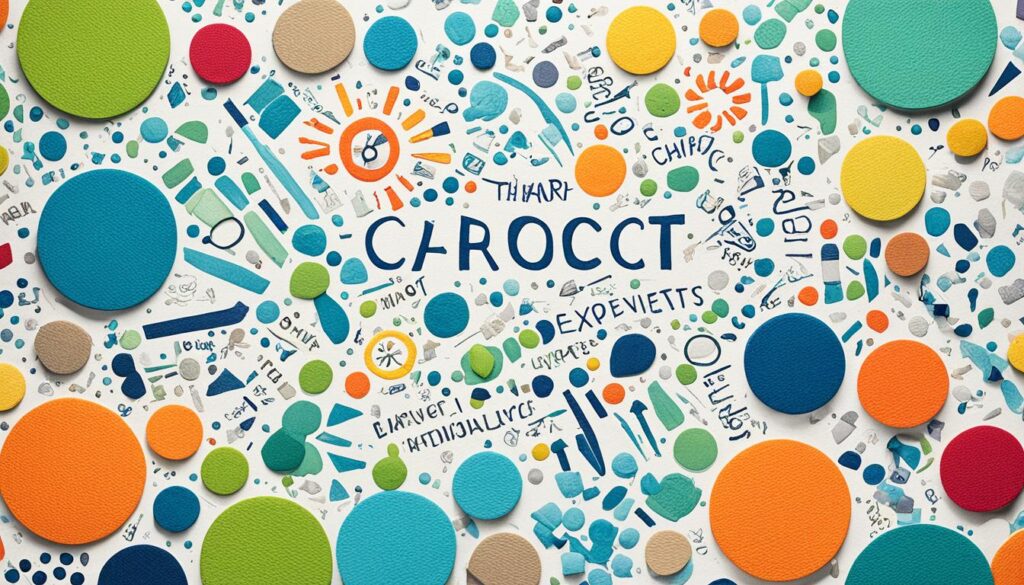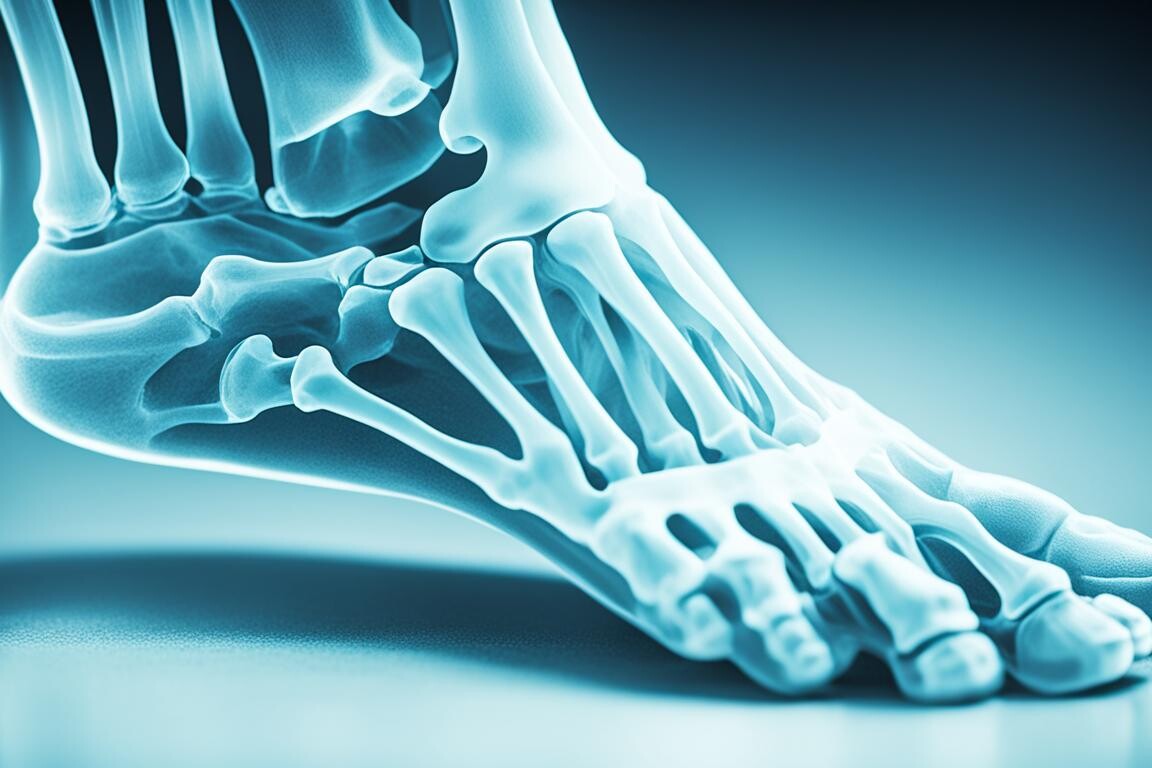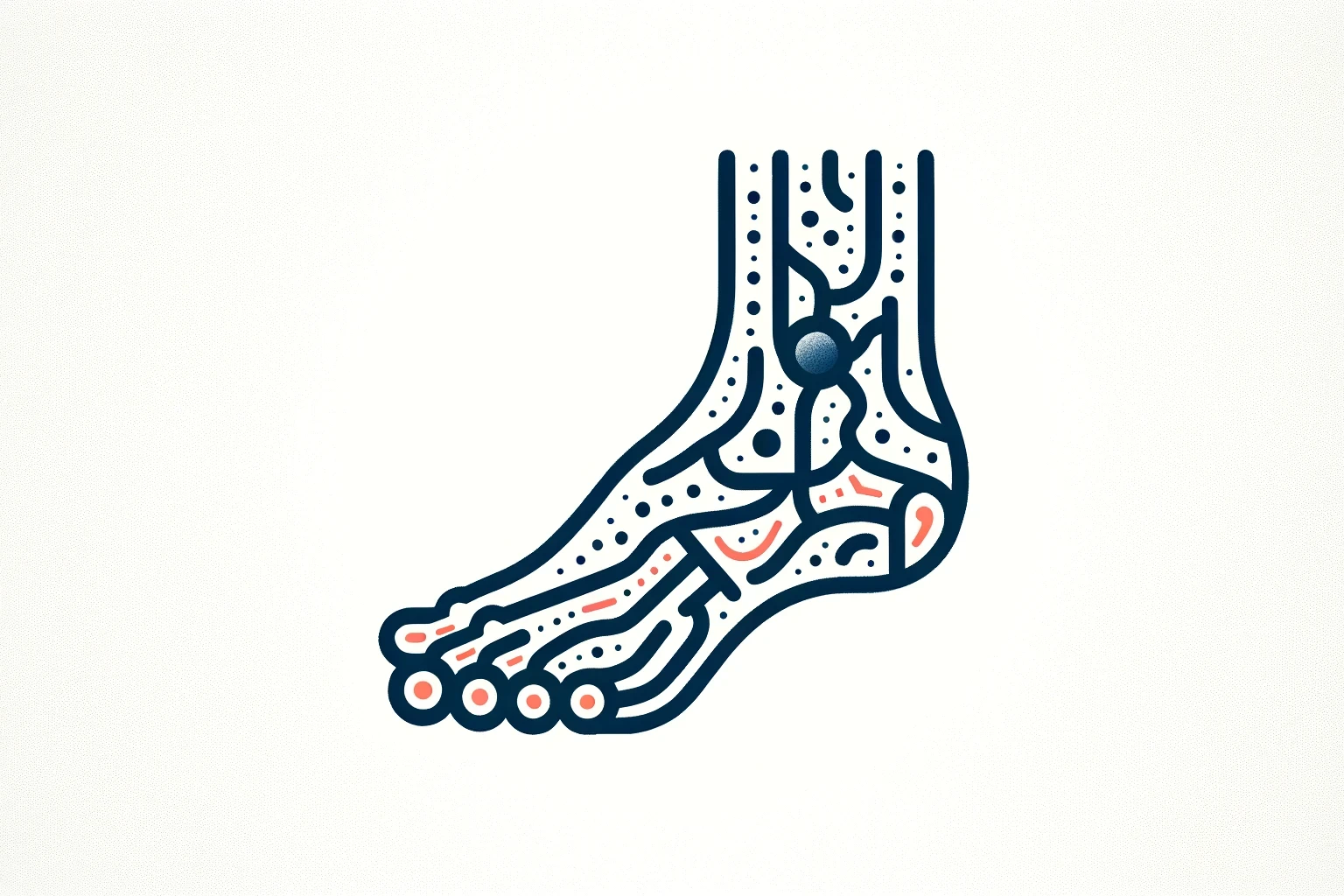Welcome to our article on Charcot Marie Tooth (CMT) disease and its impact on life expectancy. CMT is the most common inherited disorder of the peripheral nervous system, affecting individuals worldwide, including in India. In this section, we will explore the factors and longevity associated with CMT and its implications.
A recent study conducted in Denmark shed light on the life expectancy of patients diagnosed with CMT. The study utilized nationwide register-based data and found a reduced life expectancy among individuals with CMT compared to the general population.
Data analysis revealed a higher mortality rate, as indicated by a standardised mortality ratio (SMR) of 1.36. This means that individuals with CMT have a higher risk of death compared to those without the condition. The study also calculated an absolute excess mortality rate (AER) of 4.87 per 1000 person-years, further highlighting the increased mortality risk associated with CMT.
The study also identified specific factors influencing life expectancy in CMT patients. Age played a significant role, with individuals below 50 years of age exhibiting a higher SMR. Disease duration also had an impact, as cases with CMT lasting more than 10 years had a higher SMR. These findings emphasize the importance of considering these factors in understanding the longevity of individuals living with CMT.
While CMT can impact life expectancy, it’s important to note that the disease itself is not fatal nor does it affect normal life expectancy. Further research and understanding of CMT’s prevalence, incidence, and factors influencing life expectancy will help in developing better treatment options and support for individuals living with this condition.
Table of Contents
TogglePrevalence and Incidence of CMT
A comprehensive Danish study has shed light on the prevalence and incidence of Charcot Marie Tooth (CMT) in the country. These findings provide valuable insights into the impact of CMT on the population and emphasize the need for further research and support for individuals affected by this condition. Let’s take a closer look at the numbers.
The study revealed that the prevalence proportion of CMT in Denmark is approximately 22.5 per 100,000 individuals. This suggests that CMT is relatively common, affecting a significant number of people in the population. It highlights the prevalence of this condition and the importance of raising awareness and understanding among healthcare professionals and the general public.
Furthermore, the study also examined the incidence rate of CMT. It was found that approximately 0.98 cases of CMT are diagnosed per 100,000 person-years. This indicates that new cases of CMT are identified every year in Denmark. The incidence rate serves as a crucial indicator of the burden of the disease and its impact on the healthcare system.
These prevalence and incidence figures underscore the significance of CMT as a health concern in Denmark and emphasize the need for effective management, support, and resources for individuals living with this condition.
Prevalence and Incidence of CMT:
- Prevalence proportion: 22.5 per 100,000 individuals
- Incidence rate: 0.98 cases per 100,000 person-years
Factors Influencing Life Expectancy in CMT
Several factors can influence the life expectancy of individuals diagnosed with Charcot Marie Tooth disease (CMT). The Danish study highlighted two significant factors: age and disease duration. Understanding these factors is crucial in guiding treatment and support strategies for individuals with CMT.
A higher standardised mortality ratio (SMR) was observed in patients below 50 years of age. This implies a greater risk of death in younger patients with CMT. Additionally, cases with a disease duration of more than 10 years also showed a higher SMR, indicating a shortened life expectancy in individuals with a longer duration of the disease.
Table: Factors Influencing Life Expectancy in CMT
| Factors | Impact |
|---|---|
| Age (below 50 years) | Higher SMR, indicating a greater risk of death |
| Disease Duration (more than 10 years) | Higher SMR, indicating a shortened life expectancy |
Identifying and addressing these factors are crucial for enhancing the quality of life and extending the life expectancy of individuals living with CMT.
Treatment and Support Strategies
To improve outcomes and support individuals with CMT, it is essential to focus on:
- Evidence-based interventions for managing symptoms and slowing down disease progression.
- Regular medical check-ups and monitoring of disease progression to address any changes proactively.
- Physical and occupational therapy to maintain and improve mobility and function.
- Collaboration with a multidisciplinary healthcare team, including neurologists, orthopedic surgeons, genetic counselors, and physical therapists.
- Promoting self-care practices and lifestyle modifications to optimize overall health and well-being.
- Providing psychological support and counseling for individuals and their families to cope with the emotional and psychological impact of CMT.

By addressing these factors and implementing comprehensive treatment and support strategies, we can help individuals with CMT lead fulfilling lives and improve their overall prognosis.
Types and Inheritance of CMT
Charcot-Marie-Tooth disease (CMT) is a genetically heterogeneous disorder with different types and patterns of inheritance. Understanding the genetic basis of CMT is essential for accurate diagnosis, genetic counseling, and potential treatment options.
One of the most common forms of CMT is Type 1A, which is caused by mutations in the PMP22 gene. This type of CMT is inherited in an autosomal dominant pattern, which means that an affected individual has a 50% chance of passing the mutation to each of their children.
Other types of CMT include:
- Type 1B: This type is also inherited in an autosomal dominant pattern and is caused by mutations in the MPZ gene.
- Autosomal recessive: This type of CMT is caused by mutations in various genes, including MFN2, GDAP1, and ARHGEF10. It is inherited when both parents are carriers of a mutated gene.
- X-linked: This type of CMT is caused by mutations in the GJB1 gene and is inherited in an X-linked recessive pattern. It primarily affects males.
Each type of CMT is associated with specific genes and inheritance patterns, contributing to the variability in clinical symptoms and disease progression. Genetic testing can help identify the specific type and mutation responsible for an individual’s CMT, allowing for better understanding and management of the condition.

Overview of Types and Inheritance Patterns of CMT
| Type | Associated Gene | Inheritance Pattern |
|---|---|---|
| Type 1A | PMP22 | Autosomal dominant |
| Type 1B | MPZ | Autosomal dominant |
| Autosomal recessive | MFN2, GDAP1, ARHGEF10, and others | Autosomal recessive |
| X-linked | GJB1 | X-linked recessive |
Understanding the types and inheritance patterns of CMT is crucial for individuals and families affected by this condition. Genetic counseling can provide valuable information about the risks of passing on the disease to future generations and help individuals make informed decisions about family planning.
Clinical Presentation of CMT
Charcot-Marie-Tooth disease (CMT) is a neurological disorder that manifests with distinct clinical symptoms. Understanding the clinical presentation of CMT is essential for diagnosing and managing the disease effectively.
CMT primarily affects the muscles in the foot, lower leg, hand, and forearm. It is characterized by a slowly progressive degeneration of these muscle groups. The affected individuals may experience muscle weakness, muscle wasting (atrophy), and difficulties with fine motor skills.
In addition to muscle involvement, CMT also leads to a mild loss of sensation in the limbs, fingers, and toes. This sensory impairment may be associated with decreased reflexes and reduced sensitivity to touch, temperature, and pain.
Key Clinical Features of CMT
- Slowly progressive muscle weakness
- Muscle wasting (atrophy)
- Difficulty with fine motor skills
- Mild loss of sensation in limbs, fingers, and toes
- Decreased reflexes
- Reduced sensitivity to touch, temperature, and pain
The clinical symptoms of CMT generally manifest gradually and tend to become more pronounced with age. By the age of 30, individuals typically exhibit the full expression of CMT’s clinical presentation.
It is important to note that although CMT can have a significant impact on mobility and physical function, it is not a fatal disease and does not affect normal life expectancy.
Recognizing the clinical features of CMT is crucial for early detection and appropriate management. The timely intervention can help improve quality of life and alleviate the impact of the disease on daily activities.

| Clinical Features | Characteristic Presentation |
|---|---|
| Muscle involvement | Progressive weakness |
| Muscle wasting (atrophy) | |
| Difficulty with fine motor skills | |
| Sensory impairment | Mild loss of sensation in limbs, fingers, and toes |
| Decreased reflexes | |
| Reduced sensitivity to touch, temperature, and pain |
Genetic Testing for CMT
Genetic testing plays a crucial role in the diagnosis and management of Charcot-Marie-Tooth disease (CMT). By identifying specific genetic mutations associated with different types of CMT, genetic testing allows for accurate diagnosis, personalized treatment plans, and genetic counseling.
Recent research has made significant strides in improving the efficiency and accuracy of genetic testing for CMT. Algorithms developed based on the evaluation of over 1000 CMT patients have been created to streamline the testing process. These algorithms aim to ensure that individuals suspected of having CMT receive more targeted and personalized care.
By undergoing genetic testing, patients and their healthcare providers can gain valuable insights into the underlying genetic factors contributing to CMT. This information not only aids in confirming the diagnosis but also helps in predicting disease progression and identifying potential treatment options.
Benefits of Genetic Testing for CMT
Genetic testing for CMT offers several benefits for both patients and healthcare professionals. These include:
- Accurate Diagnosis: Genetic testing provides definitive confirmation of CMT and can help differentiate between different types and subtypes of the disease.
- Personalized Treatment Plans: Identifying the specific genetic mutation allows for targeted treatment plans that address the underlying cause of CMT, potentially leading to more effective management strategies.
- Prognostic Information: Genetic testing can provide insights into disease progression, allowing patients and their healthcare team to anticipate and prepare for potential challenges.
- Genetic Counseling: Testing results can help individuals determine the likelihood of passing CMT on to their children and make informed decisions regarding family planning.
- Research and Clinical Trials: Genetic testing contributes to ongoing research efforts and provides opportunities for participation in clinical trials exploring new treatments for CMT.
With advancements in genetic testing technology and research, the future holds great promise for further improving the accuracy, accessibility, and affordability of testing for CMT. As more individuals undergo genetic testing, our understanding of the disease will continue to expand, driving advancements in personalized care and potential therapeutic interventions.
Types and Associated Genes of Charcot Marie Tooth Disease (CMT)
| Type of CMT | Associated Gene(s) | Inheritance Pattern |
|---|---|---|
| Type 1A | PMP22 | Autosomal Dominant |
| Type 1B | MPZ | Autosomal Recessive |
| Type 2A | MFN2 | Autosomal Dominant |
| Type 2E | NEFL | Autosomal Dominant |
| Type X | GJB1 | X-linked |

Genetic testing plays a crucial role in the diagnosis and management of Charcot Marie Tooth disease.
Conclusion
Charcot-Marie-Tooth disease (CMT) is a condition that can impact the life expectancy of individuals diagnosed with the disease. Studies have shown that CMT patients generally have a reduced life expectancy, with certain factors such as age and disease duration playing a significant role in this outcome.
However, it is important to note that CMT is not a fatal disease and does not affect normal life expectancy. While individuals with CMT may experience certain challenges and limitations due to the progressive nature of the disease, they can still lead fulfilling and meaningful lives.
Genetic testing plays a crucial role in accurately diagnosing CMT and tailoring treatment plans to individual patients. By identifying the specific genetic mutations associated with CMT, healthcare professionals can provide personalized management strategies and support.
Continued research into the prevalence, incidence, and factors influencing life expectancy in CMT is essential to improve treatment options and support for individuals living with the disease. By expanding our knowledge and understanding, we can ensure that those affected by CMT receive the best possible care and lead fulfilling lives.
FAQ
What is Charcot-Marie-Tooth (CMT) disease?
Charcot-Marie-Tooth (CMT) disease is the most common inherited disorder of the peripheral nervous system. It is characterized by a progressive degeneration of the muscles in the foot, lower leg, hand, and forearm, as well as a mild loss of sensation in the limbs, fingers, and toes.
Does CMT affect life expectancy?
While CMT can impact the life expectancy of individuals diagnosed with the condition, it is important to note that CMT is not a fatal disease and does not affect normal life expectancy.
What factors influence life expectancy in CMT?
Factors such as age and disease duration have been found to influence life expectancy in CMT. Patients below 50 years of age and those with a disease duration of more than 10 years have been found to have a higher risk of mortality.
What are the types and inheritance patterns of CMT?
CMT is a genetically heterogeneous disorder with different types and patterns of inheritance. The most common form is Type 1A, caused by mutations in the PMP22 gene. Other types of CMT include Type 1B, autosomal recessive, and X-linked.
What are the clinical symptoms of CMT?
The clinical symptoms of CMT include a progressive degeneration of the muscles in the foot, lower leg, hand, and forearm, as well as a mild loss of sensation in the limbs, fingers, and toes. These symptoms typically fully manifest by the age of 30.
How does genetic testing help with the diagnosis and management of CMT?
Genetic testing plays a crucial role in the accurate diagnosis and management of CMT. There are multiple genes associated with different types of CMT, and identifying the specific genetic mutation can help with accurate diagnosis, genetic counseling, and potential treatment options.
What is the prevalence and incidence of CMT?
In Denmark, the prevalence of CMT was found to be 22.5 per 100,000 population, suggesting that CMT is relatively common. The incidence rate was 0.98 per 100,000 person-years, indicating new cases of CMT diagnosed each year.
What is the conclusion about CMT?
Understanding the impact of CMT on the population and the factors influencing life expectancy can lead to better treatment options and support for individuals with CMT. Genetic testing and early diagnosis are crucial for accurate management of the disease.
Source Links
About The Author

This article is medically reviewed by Dr. Chandril Chugh, Board-Certified Neurologist, providing expert insights and reliable health information.
Dr. Chandril Chugh is a U.S.-trained neurologist with over a decade of experience. Known for his compassionate care, he specializes in treating neurological conditions such as migraines, epilepsy, and Parkinson’s disease. Dr. Chugh is highly regarded for his patient-centered approach and dedication to providing personalized care.
→ Book a consultation to discover which remedies suit your needs best.




